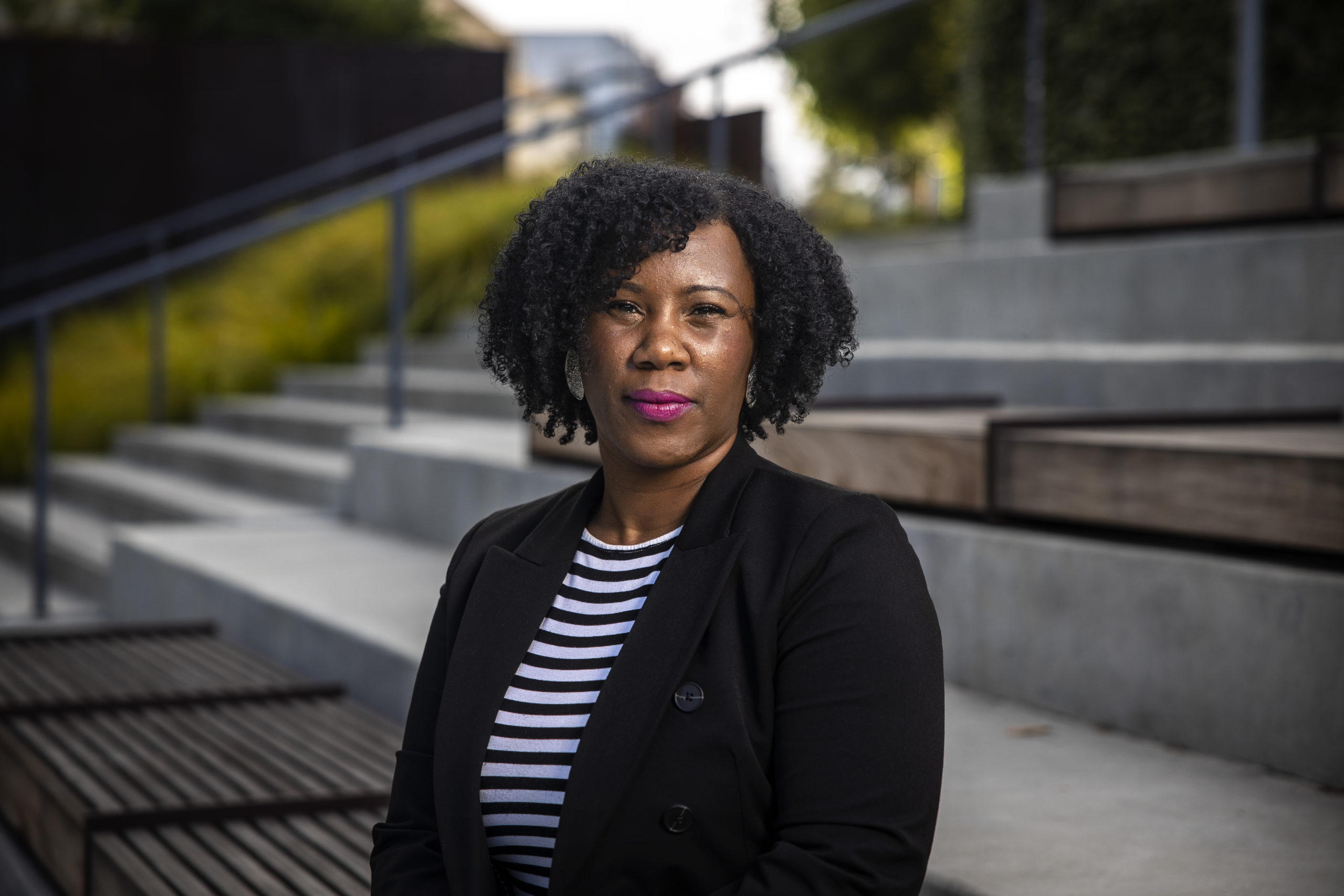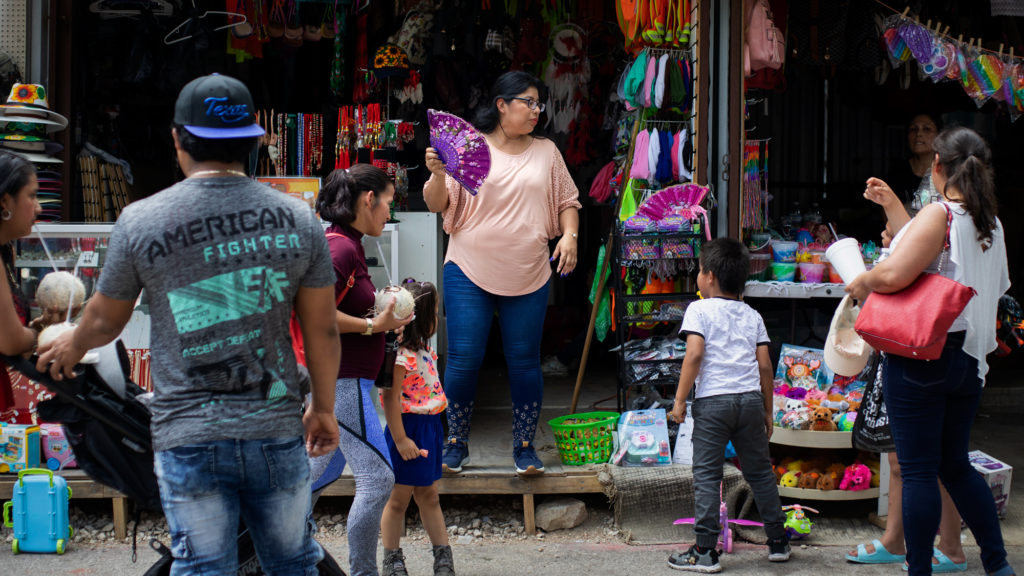Nearly two-thirds of U.S. hospitals carry a not-for-profit designation, making them exempt from property, income, or sales tax payments. Such institutions are expected to return to their communities what they would otherwise pay in taxes by way of programs and financial models that make health more accessible for low-income and underserved populations. Erica Browne, originally from Los Angeles, is a doctoral candidate in the UC Berkeley School of Public Health and a pre-doctoral fellow with the California Initiative for Health Equity and Action who studies private nonprofit hospital investments.
As a child, I heard the story of the Watts Rebellion of 1965, the relentless police violence and economic injustice that precipitated it, and why two historical Black institutions in South Los Angeles — Charles Drew University of Medicine & Science and Martin Luther King Jr. Hospital — were established in its aftermath.
Years later, I learned the story of Bridget “Biddy” Mason — midwife, nurse, and philanthropist — who walked more than 1,700 miles from Mississippi to Utah to California, towards her freedom from slavery, which she won by petition in a Los Angeles district court.
History matters.
There is a deep-rooted history of racial injustice and Black survival that stretches across Los Angeles. Today, as I continue to bear witness to the incredible suffering from disproportionate debt, displacement, and death that Black communities throughout California experience, I am confronted by the profound effects of systemic racism on racial inequities in health.
In California, Black residents have the lowest life expectancy, the worst maternal and child health outcomes, and the highest death rates for breast, lung, colorectal, and prostate cancer. In Los Angeles, we represent 9 percent of the population, yet account for more than 40 percent of those who are houseless, 30 percent of the L.A. County jail population, and 27 percent of children placed in out-of-home care.
We are more likely to experience unemployment, even after earning advanced degrees. We are paid less than our White counterparts, and our youth are more likely to be disconnected from educational and employment opportunities. Because we face racism in education, housing, employment, financial lending, and health care, achieving health equity requires that we reckon with the myriad impacts of systemic racism on Black well-being.
Our stories matter.
Yet there remains a persistent erasure of the medical contributions of Blacks that has occurred alongside the medical experimentation and exploitation of our bodies. Reproductive technologies were perfected and profiteered on the bodies of Black women without consent or therapeutic benefit. The medical exploitation of Black Americans was foundational to slavery, scientific racism, and the racial inequities in health that we see today.
These inequities are not mathematical abstractions or historical aberrations. They are, instead, the many windows and mirrors that reveal deeply personal, painful, and persistent injustices that must become part of our public narrative. As private nonprofit hospitals and other health care organizations articulate their commitment to racial justice, the entrenched systemic racism within the medical establishment must also be acknowledged and addressed.
Actions matter.
There are nearly 200 private nonprofit hospitals in California that report more than $12 billion in annual community benefits. Unlike other states, in California these hospitals are able to distinguish between investments that benefit vulnerable populations, and those intended to benefit the broader community. This creates an opportunity for hospitals to consider and respond to the health needs of communities that experience vulnerability at the intersections of racism, disability, poverty, and other forms of social exclusion.
While much of the public debate concerning private nonprofit hospital community benefit has emphasized whether these investments are commensurate to tax-savings, less attention has focused on who benefits and how racial inequities are addressed.
A commitment to racial justice and health equity requires action. Here are three first steps that private nonprofit hospitals can take to extend the impact of their investments and solidarity statements:
First, the historical medical exploitation, medical racial segregation, and erasure of the medical contributions of Black people can be acknowledged and prioritized in the form of community benefit resource allocations. There is a legacy of Black medical entrepreneurship in Los Angeles that extends beyond Biddy Mason, and that must be sustained, supported, and encouraged.
For example, the Kaiser Permanente Bernard J. Tyson School of Medicine has committed to eliminating the tuition and health insurance costs for students admitted through 2024, which can serve as a model for other hospital systems to align their health-professions education and training investments with the disproportionate education and economic need that exists in Black communities.
Second, private nonprofit hospitals can use data on racial and social inequities in health to prioritize their investments in specific types of community building activities. Investments in housing and infrastructure, economic development, and workforce development can be made by private nonprofit hospitals as part of their community benefits.
Racial equity provides a moral imperative and an economic opportunity for private nonprofit hospitals to optimally deploy the full range of resources necessary to create and sustain the conditions of health. For decades, Charles Drew University of Medicine & Science and Martin Luther King Jr. Hospital have generated critical employment and economic opportunities for Black communities disproportionately and adversely impacted by racial disparities in medical care and disinvestment.
For example, Charles Drew University’s K-12 pipeline programs have enabled generations of Black students to pursue health careers in underserved areas, and its community partnerships have supported numerous local businesses and nonprofit organizations. Other initiatives, such as the housing investments made through Dignity Health’s Community Investment Program, can be targeted and expanded to provide an example for hospitals working to advance racial equity.
Third, private nonprofit hospitals can interrogate the institutional and individual biases that perpetuate racial inequities in health. Hospitals are institutions where people make daily decisions that reflect a particular set of values, beliefs, and priorities. Transformative action — to heal and prevent racial injustice — requires transformative ideas that are informed by diverse perspectives.
Private nonprofit hospitals can employ, equitably compensate, promote, and value the lived experience of Black people as leaders and thought-partners in community benefit decision-making. Private nonprofit hospitals, in particular, are uniquely positioned to help dismantle structural racism and reimagine health care.
This work is admittedly difficult, but nonetheless necessary, not only in Los Angeles, but throughout our entire health care system, within all of our communities, at our proverbial kitchen tables, and in our mirrors, too.



